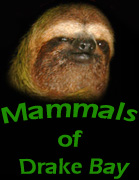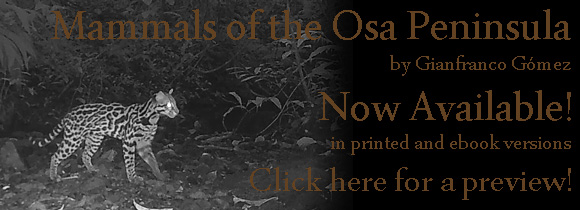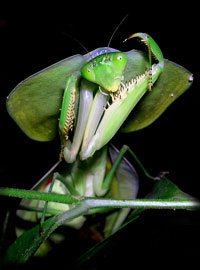|
Discover the
hidden treasures of Drake Bay, Costa Rica with Tracie "The Bug Lady" .

Home

Tour
Basics

Meet the Bug
Lady

Tales from the
Edge

Media

Reservations

Links



Facts about Drake Bay, Costa Rica

Travel To Drake Bay

Drake Bay Area Map

Hotel Information

Tips for Travelers

Tours

Recommended
Reading





|
|
|
 |
|
The Smoky
Jungle Frog is definitely one of our most impressive frogs. Its
enormous size and girth will consistently draw gasps of shock and,
at times, horror from our guests on The Night Tour.
They are Costa Rica's largest frog species and second largest
amphibian. Only the Giant Marine Toad (Rhinella
horribilis) is
larger. Adult Smoky Jungle Frogs may measure between 106 and 185 millimeters! But it is not
just their size that makes them intimidating.
Smoky
Jungle Frogs contain a powerful toxin in their skin called
leptodactylin. If you were to pick this frog up, it would
immediately begin secreting large amounts of mucous from its skin.
If the person handling the frog is unfortunate enough to have a cut
or scrape on their hands, it will start stinging right away and they
would probably end up with a very nasty rash. If you were in a closed room
with someone handling the frog, it may vaporize
its toxins and cause sneezing, swelling of the eyes, and runny nose
even to innocent bystanders. |
|
These very large frogs are also very formidable predators. They prey
on a variety of frogs, even large tree frogs such as Gladiator
Tree Frogs (Boana
rosenbergi) and Masked Tree Frogs (Smilisca
phaeota). They detect calling males and home in on their location using their
keen sense of
hearing.
Smoky Jungle Frogs are mostly sit-and-wait predators, though, and
will take just about anything that makes the mistake of passing near enough
for the frog to pounce upon. Even members of the highly toxic Dendrobatidae
family, the Poison-dart Frogs, are not immune from the Smoky
Jungle Frogs' voracious appetite.
Incredibly, they can also feed on snakes up to
500 millimeters in length! It is also the only frog in Latin America
known to make scorpions a part of their diet. Once, while on The Night Tour, we
came across a Smoky Jungle Frog struggling to ingest a very large
Jack-O-Lantern Land Crab, about as big as the frog itself. Other
prey items may include: very large insects, bird nestlings, lizards,
and bats. |
|
During their mating season,
Smoky Jungle Frog males will generally call from swampy areas, the
edges of ponds, or marshes. Sometimes they will call from their
underground burrows. Their call is a very loud "whroop!" which is
repeated every few seconds. Males are easily distinguished at this
time because their arms become very swollen and they develop spikes
near each thumb and two on their chest. The spikes are used
in territorial clashes with other males as well as to better grasp
females during mating.
If a female is attracted
into a male's territory they will mate right there. Females normally lay about 1000 eggs.
As she is laying her eggs and the male is fertilizing them, with his
back legs he will whip up a huge foamy nest. This foam is made
up of eggs, sperm, toxic skin mucous, air and water and may measure
up to 7 liters in volume.
In the picture, on the right,
of two Smoky Jungle Frogs mating, the female is below the male
nearly submerged in the foamy nest. The tip of her snout and
right eye is barely visible.
The foamy nest will protect
the eggs from predators and dehydration and will also provide the
tadpoles with some nutrition after they hatch. Once they do hatch,
tadpoles will normally be washed out of the nest during a heavy
rain. They develop in stagnant bodies of water where they feed on
other tadpoles, including their own species, frog eggs and vegetable
matter. It will take the tadpoles about 28 days to complete their
metamorphosis and emerge from the water as tiny froglets. If they
can avoid predation, Smoky Jungle Frogs may live up to 15 years.
|
|
References:
Beletsky, L.
2005 Travellers' Wildlife Guides Costa Rica
Interlink Publishing
Janzen, D. 1983 Costa Rican Natural History
University of Chicago Press
Leenders, T.
2001 A Guide to Amphibians and Reptiles of Costa Rica
Zona Tropical
Savage, J. 2002 The Amphibians and Reptiles of
Costa Rica University of Chicago Press
|

|
|
|
|
The Frog
Files





     






 |



 Alien Earthlings
Alien Earthlings  The
Dark Side
The
Dark Side















